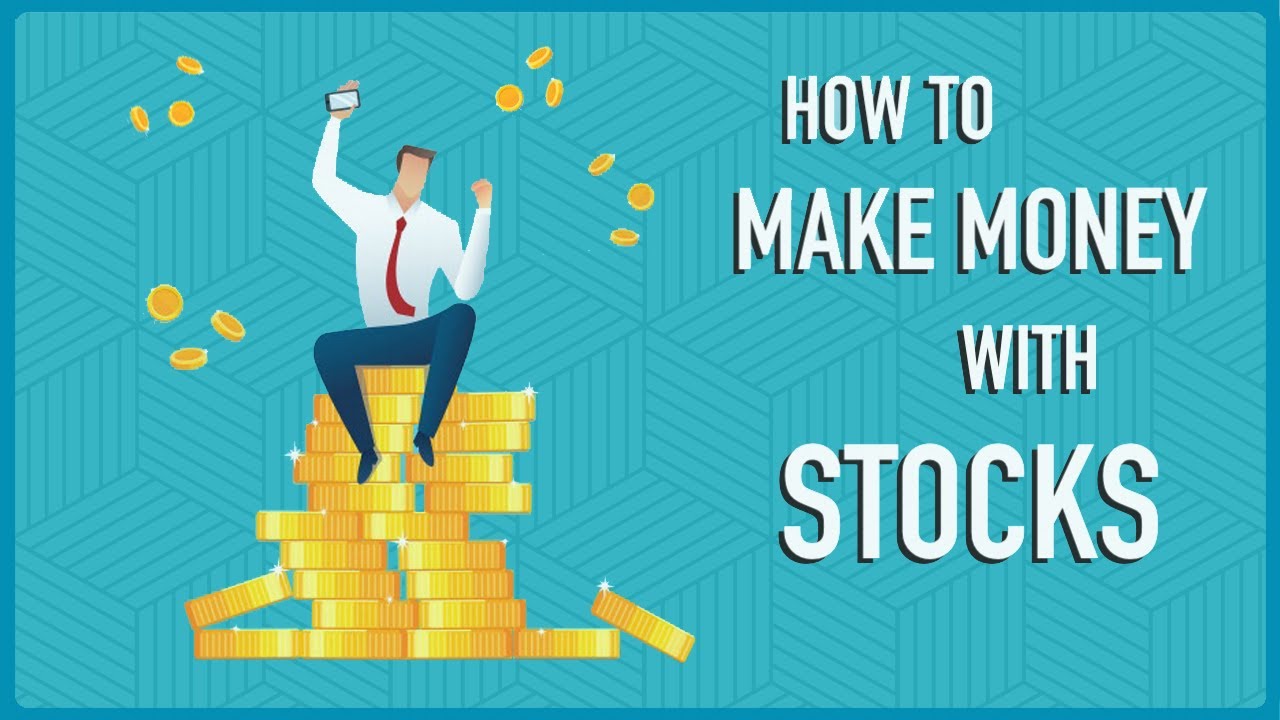
Investing in Forex can be a risky business, but if you follow a good strategy and have the right capital at your disposal, you can make a pretty decent living. To trade Forex, however, you need to be aware of how much capital you'll need. The amount you'll need depends on your trading style, life circumstances, and personal preferences. You should also consider the possibility of losing your capital, and how much you can afford.
As a general rule of thumb, you'll want to invest a minimum of 1% of your account balance into each trade. If you trade using leveraged products, however, you will need to invest 5% to 15% more of your account in order to get the best out of your investments. To ensure you don't lose any money, it is a good idea to place a stop-loss or order. A stop-loss order is a request by a broker to close a trade at a set price. If you have an account with a broker that requires a minimum amount of money to be deposited before you can place a stop-loss order, you may want to think about getting another broker.

To determine how much money it will cost to trade forex, you need to know how much you are willing to risk. By doing this, you can trade with a suitable level of risk and feel more confident in your trades. You shouldn't expect to win every day, but even the most skilled traders will have their down days. If you have a little extra cash, you may want to save it in a savings account to make sure you're prepared for a loss.
Finding a forex broker with a demo account that allows forex trading is the best option if you want to start. This will allow you to learn more about different currencies as well as the various forex trading strategies. Demo accounts are a great way to try out your trading strategy before you risk any real money. Demo accounts allow you to test different forex trading strategies without risking any real money.
It is best to assess your trading style, life circumstances, as well as your desired outcomes to determine how much money you will require to begin Forex trading. For a full-time trade, you will need at least $500. If you are looking to make a side income from currency trading, you will need at minimum $3000. Although it's not a huge amount, it will allow you to start earning a modest income.

Also, it's a smart idea to consider trading classes. Many brokers offer classes, and a well-taught class can speed your learning curve. A great teacher can help you find the best strategies to suit your trading style.
FAQ
What is a Stock Exchange?
Companies sell shares of their company on a stock market. This allows investors to buy into the company. The market sets the price of the share. It is typically determined by the willingness of people to pay for the shares.
The stock exchange also helps companies raise money from investors. Investors invest in companies to support their growth. Investors purchase shares in the company. Companies use their money as capital to expand and fund their businesses.
Stock exchanges can offer many types of shares. Some are known simply as ordinary shares. These shares are the most widely traded. These shares can be bought and sold on the open market. Prices for shares are determined by supply/demand.
Preferred shares and bonds are two types of shares. When dividends become due, preferred shares will be given preference over other shares. These bonds are issued by the company and must be repaid.
What are the advantages of owning stocks
Stocks have a higher volatility than bonds. Stocks will lose a lot of value if a company goes bankrupt.
But, shares will increase if the company grows.
Companies often issue new stock to raise capital. Investors can then purchase more shares of the company.
To borrow money, companies can use debt finance. This allows them to access cheap credit which allows them to grow quicker.
A company that makes a good product is more likely to be bought by people. Stock prices rise with increased demand.
The stock price will continue to rise as long that the company continues to make products that people like.
How are shares prices determined?
Investors decide the share price. They are looking to return their investment. They want to make profits from the company. They buy shares at a fixed price. The investor will make more profit if shares go up. Investors lose money if the share price drops.
An investor's main objective is to make as many dollars as possible. This is why they invest. They can make lots of money.
How can people lose money in the stock market?
The stock market is not a place where you make money by buying low and selling high. It is a place where you can make money by selling high and buying low.
The stock market is an arena for people who are willing to take on risks. They will buy stocks at too low prices and then sell them when they feel they are too high.
They hope to gain from the ups and downs of the market. If they aren't careful, they might lose all of their money.
What is the trading of securities?
The stock market lets investors purchase shares of companies for cash. In order to raise capital, companies will issue shares. Investors then purchase them. When investors decide to reap the benefits of owning company assets, they sell the shares back to them.
Supply and demand determine the price stocks trade on open markets. If there are fewer buyers than vendors, the price will rise. However, if sellers are more numerous than buyers, the prices will drop.
There are two options for trading stocks.
-
Directly from your company
-
Through a broker
Statistics
- Even if you find talent for trading stocks, allocating more than 10% of your portfolio to an individual stock can expose your savings to too much volatility. (nerdwallet.com)
- Ratchet down that 10% if you don't yet have a healthy emergency fund and 10% to 15% of your income funneled into a retirement savings account. (nerdwallet.com)
- For instance, an individual or entity that owns 100,000 shares of a company with one million outstanding shares would have a 10% ownership stake. (investopedia.com)
- The S&P 500 has grown about 10.5% per year since its establishment in the 1920s. (investopedia.com)
External Links
How To
How to open and manage a trading account
It is important to open a brokerage accounts. There are many brokerage firms out there that offer different services. There are many brokers that charge fees and others that don't. Etrade, TD Ameritrade Fidelity Schwab Scottrade Interactive Brokers are some of the most popular brokerages.
Once you have opened your account, it is time to decide what type of account you want. Choose one of the following options:
-
Individual Retirement accounts (IRAs)
-
Roth Individual Retirement Accounts
-
401(k)s
-
403(b)s
-
SIMPLE IRAs
-
SEP IRAs
-
SIMPLE 401(k)s
Each option offers different advantages. IRA accounts offer tax advantages, but they require more paperwork than the other options. Roth IRAs allow investors deductions from their taxable income. However, they can't be used to withdraw funds. SIMPLE IRAs have SEP IRAs. However, they can also be funded by employer matching dollars. SIMPLE IRAs are simple to set-up and very easy to use. They allow employees and employers to contribute pretax dollars, as well as receive matching contributions.
Next, decide how much money to invest. This is your initial deposit. Most brokers will give you a range of deposits based on your desired return. For example, you may be offered $5,000-$10,000 depending on your desired rate of return. This range includes a conservative approach and a risky one.
After choosing the type of account that you would like, decide how much money. Each broker has minimum amounts that you must invest. These minimums vary between brokers, so check with each one to determine their minimums.
After deciding the type of account and the amount of money you want to invest, you must select a broker. Before choosing a broker, you should consider these factors:
-
Fees: Make sure your fees are clear and fair. Brokers often try to conceal fees by offering rebates and free trades. However, many brokers increase their fees after your first trade. Be wary of any broker who tries to trick you into paying extra fees.
-
Customer service: Look out for customer service representatives with knowledge about the product and who can answer questions quickly.
-
Security - Choose a broker that provides security features such as multi-signature technology and two-factor authentication.
-
Mobile apps - Find out if your broker offers mobile apps to allow you to view your portfolio anywhere, anytime from your smartphone.
-
Social media presence - Find out if the broker has an active social media presence. If they don’t have one, it could be time to move.
-
Technology - Does the broker utilize cutting-edge technology Is it easy to use the trading platform? Are there any problems with the trading platform?
After choosing a broker you will need to sign up for an Account. Some brokers offer free trials. Other brokers charge a small fee for you to get started. After signing up, you'll need to confirm your email address, phone number, and password. Next, you will be asked for personal information like your name, birth date, and social security number. You will then need to prove your identity.
Once verified, you'll start receiving emails form your brokerage firm. It's important to read these emails carefully because they contain important information about your account. This will include information such as which assets can be bought and sold, what types of transactions are available and the associated fees. You should also keep track of any special promotions sent out by your broker. You might be eligible for contests, referral bonuses, or even free trades.
The next step is to create an online bank account. An online account is typically opened via a third-party site like TradeStation and Interactive Brokers. Both websites are great resources for beginners. When opening an account, you'll typically need to provide your full name, address, phone number, email address, and other identifying information. Once you have submitted all the information, you will be issued an activation key. You can use this code to log on to your account, and complete the process.
Once you have opened a new account, you are ready to start investing.